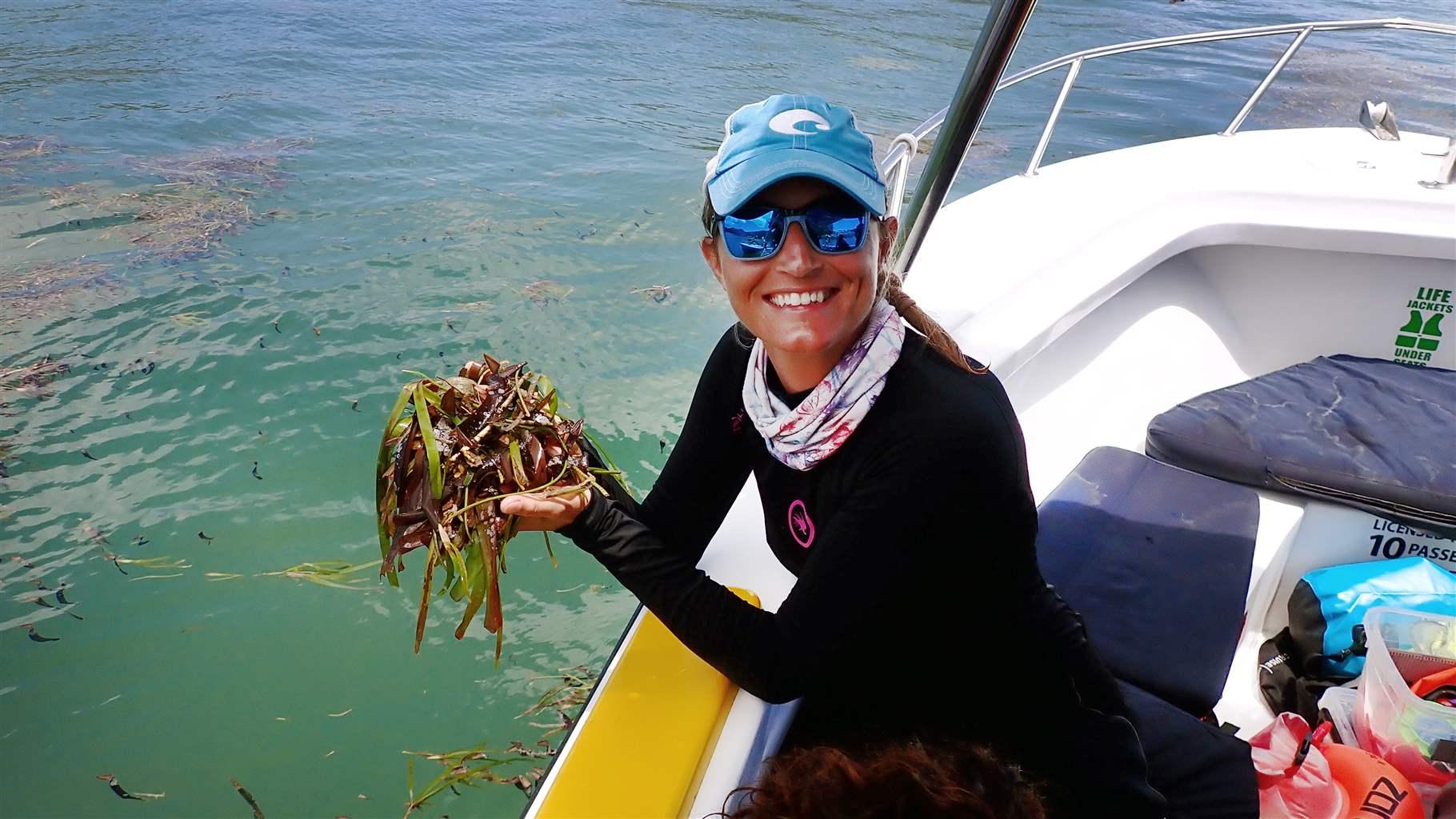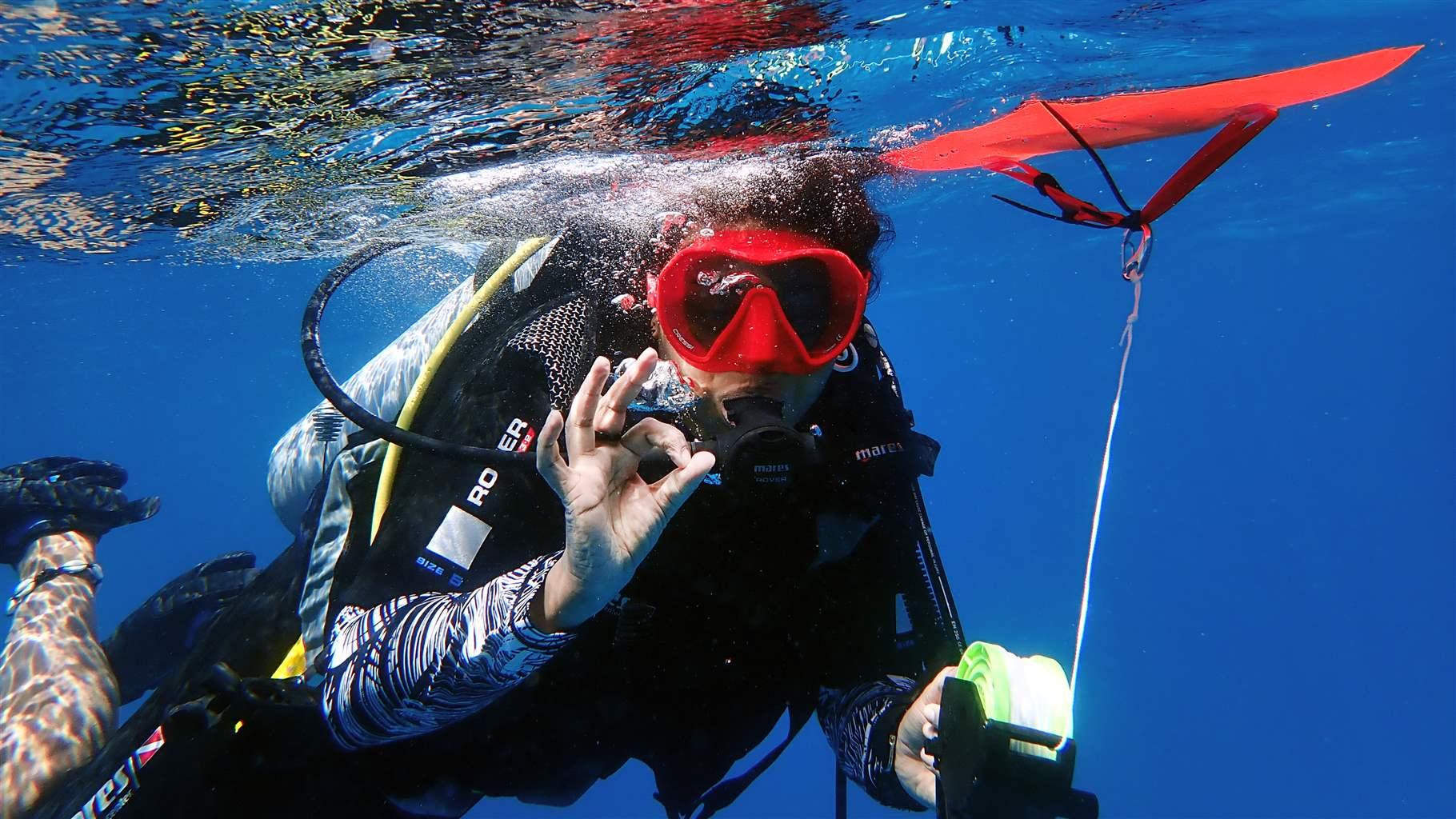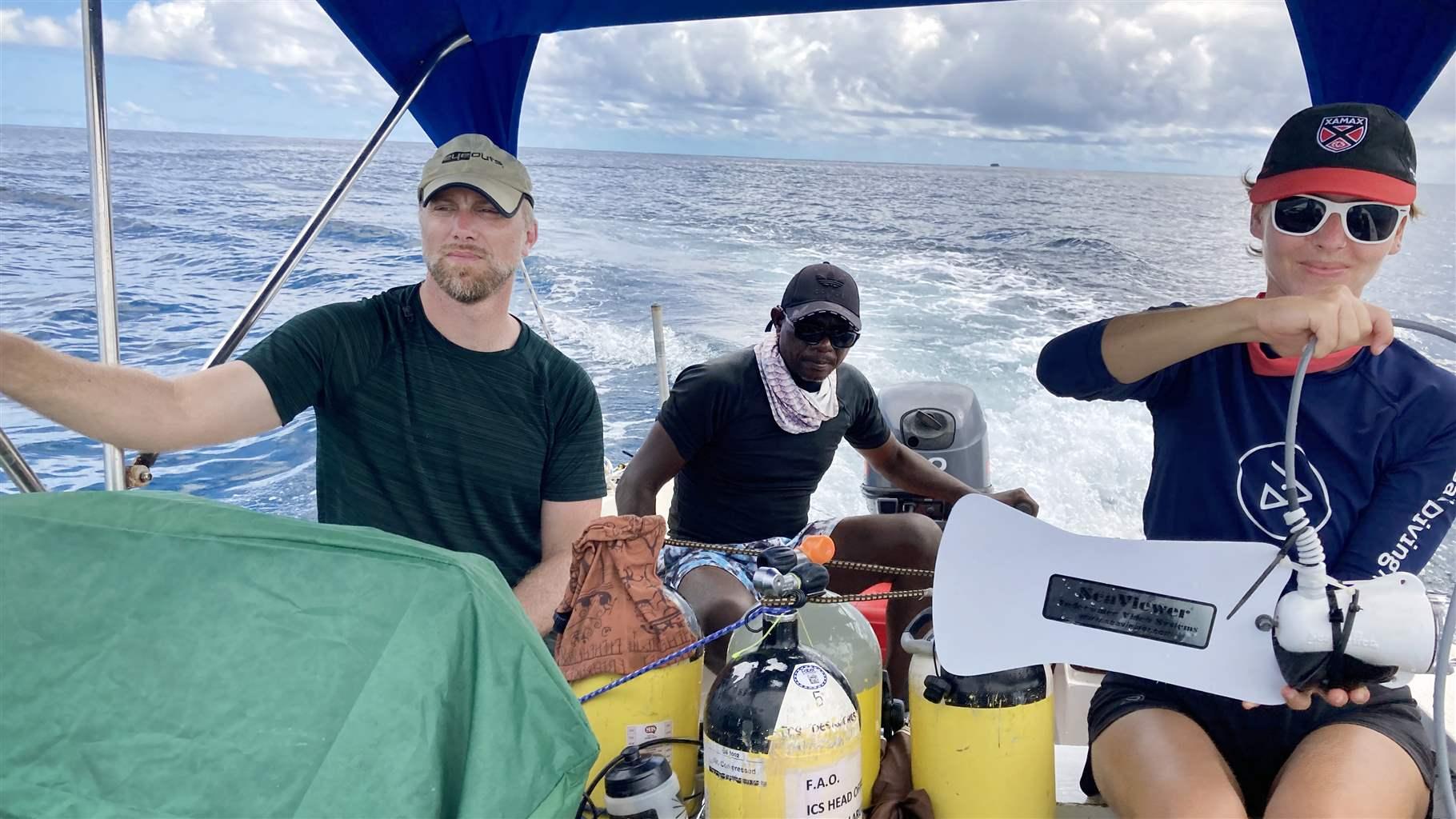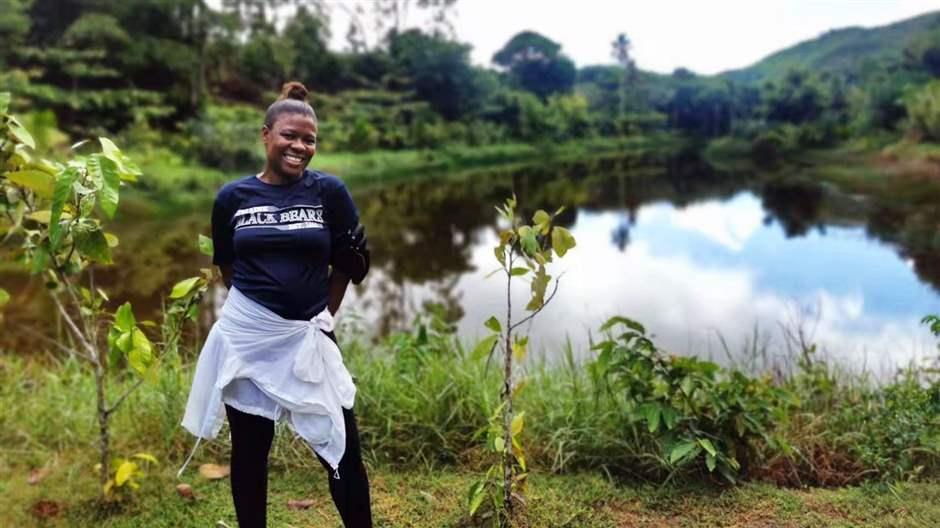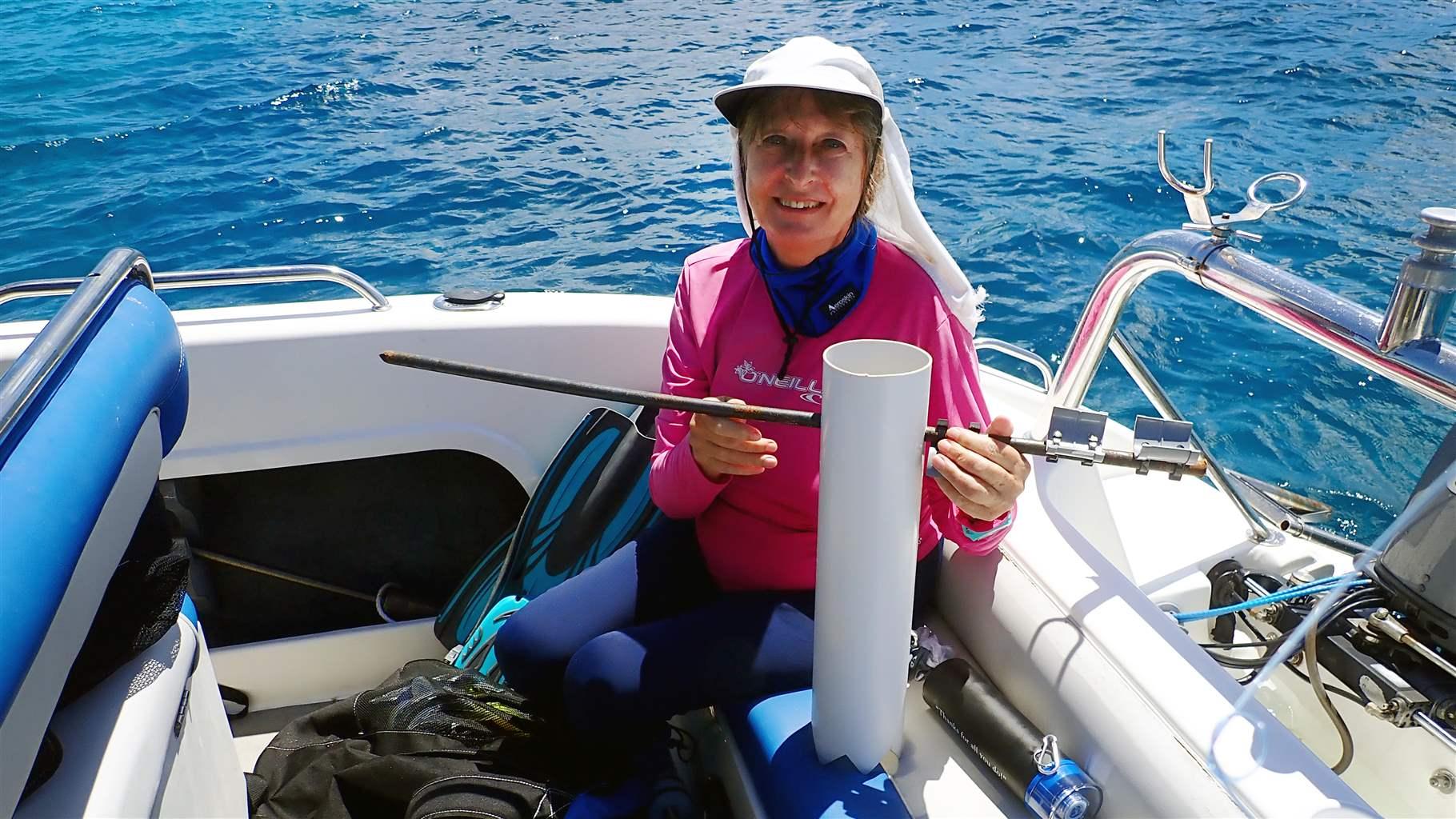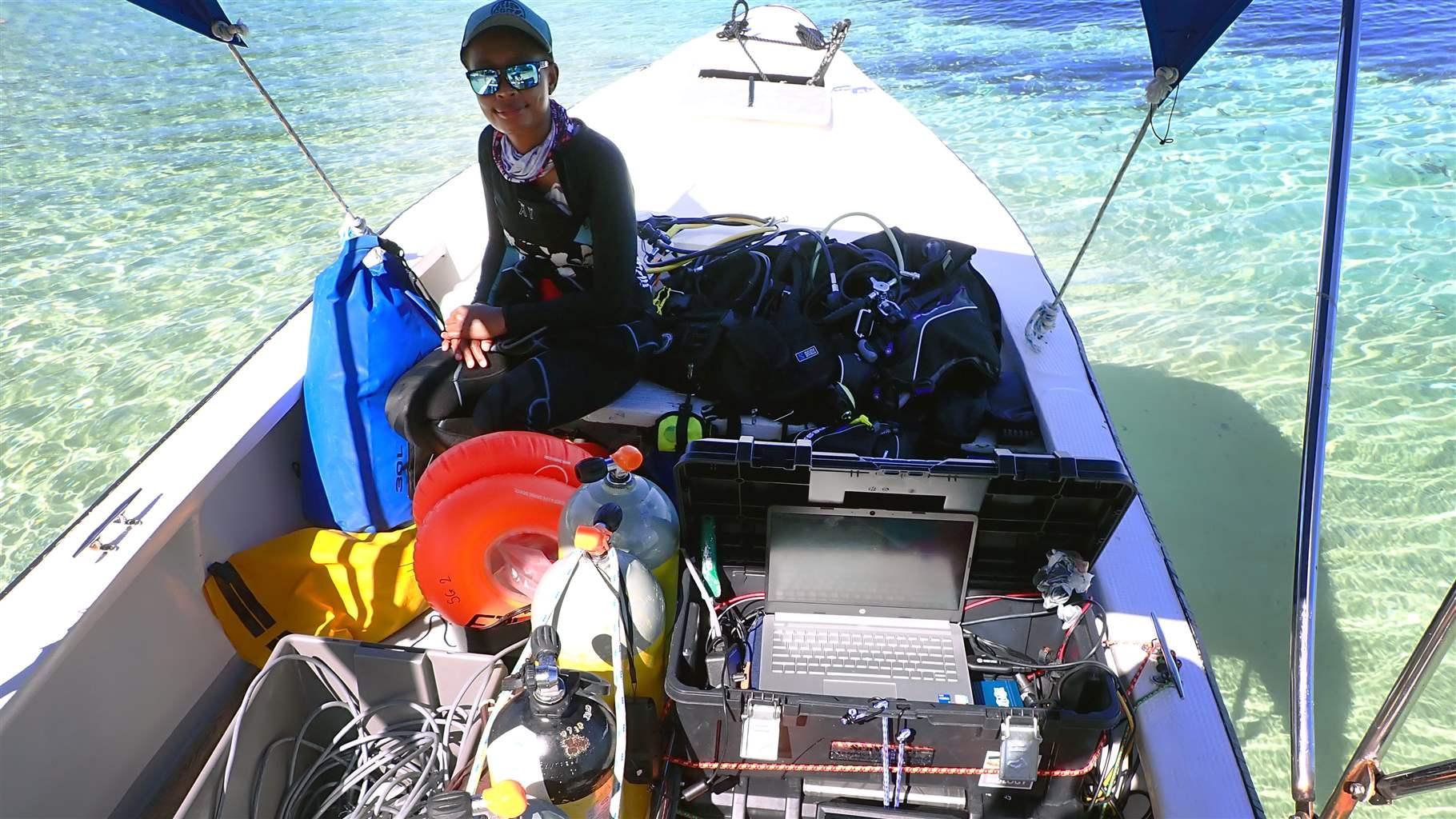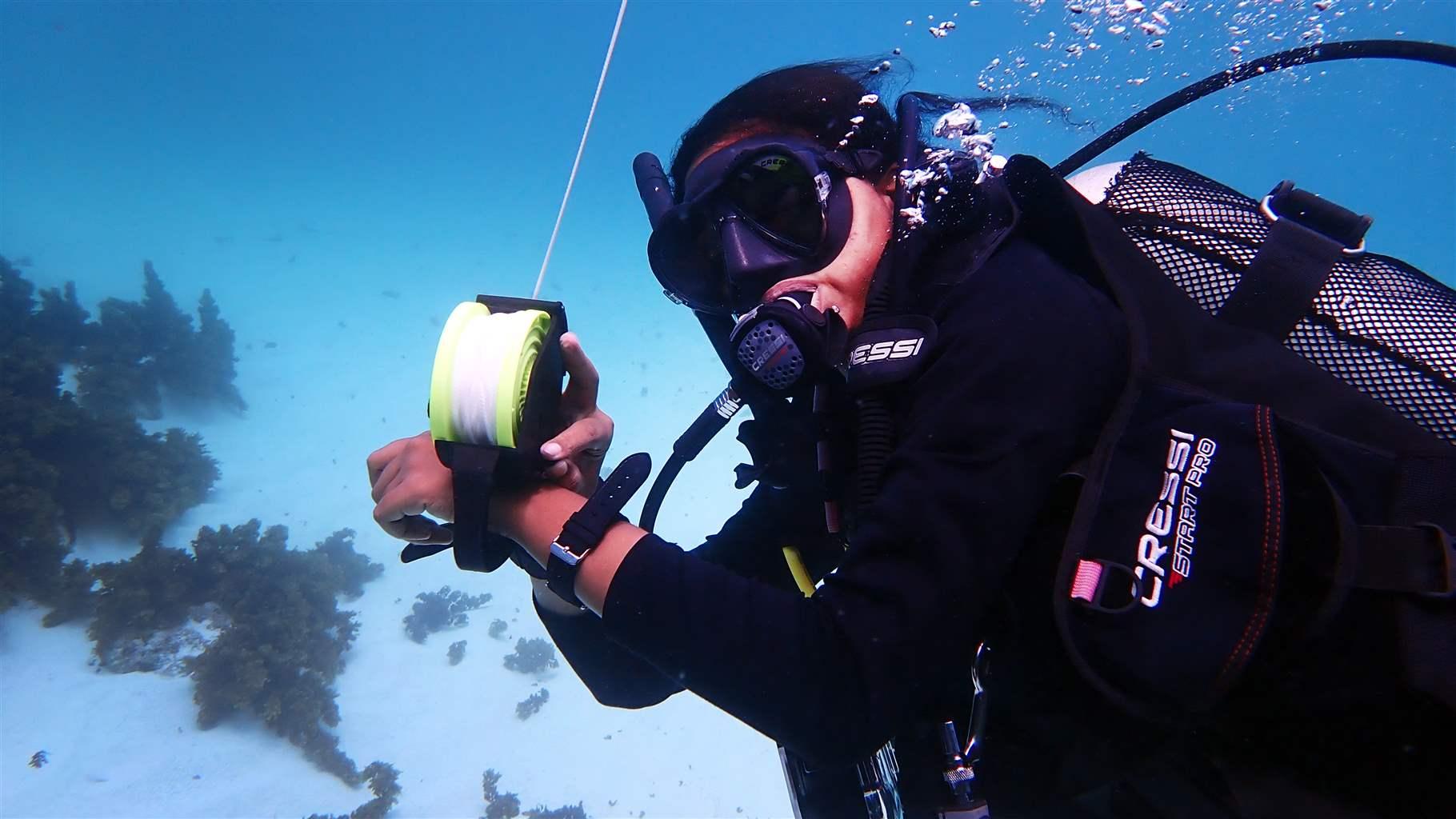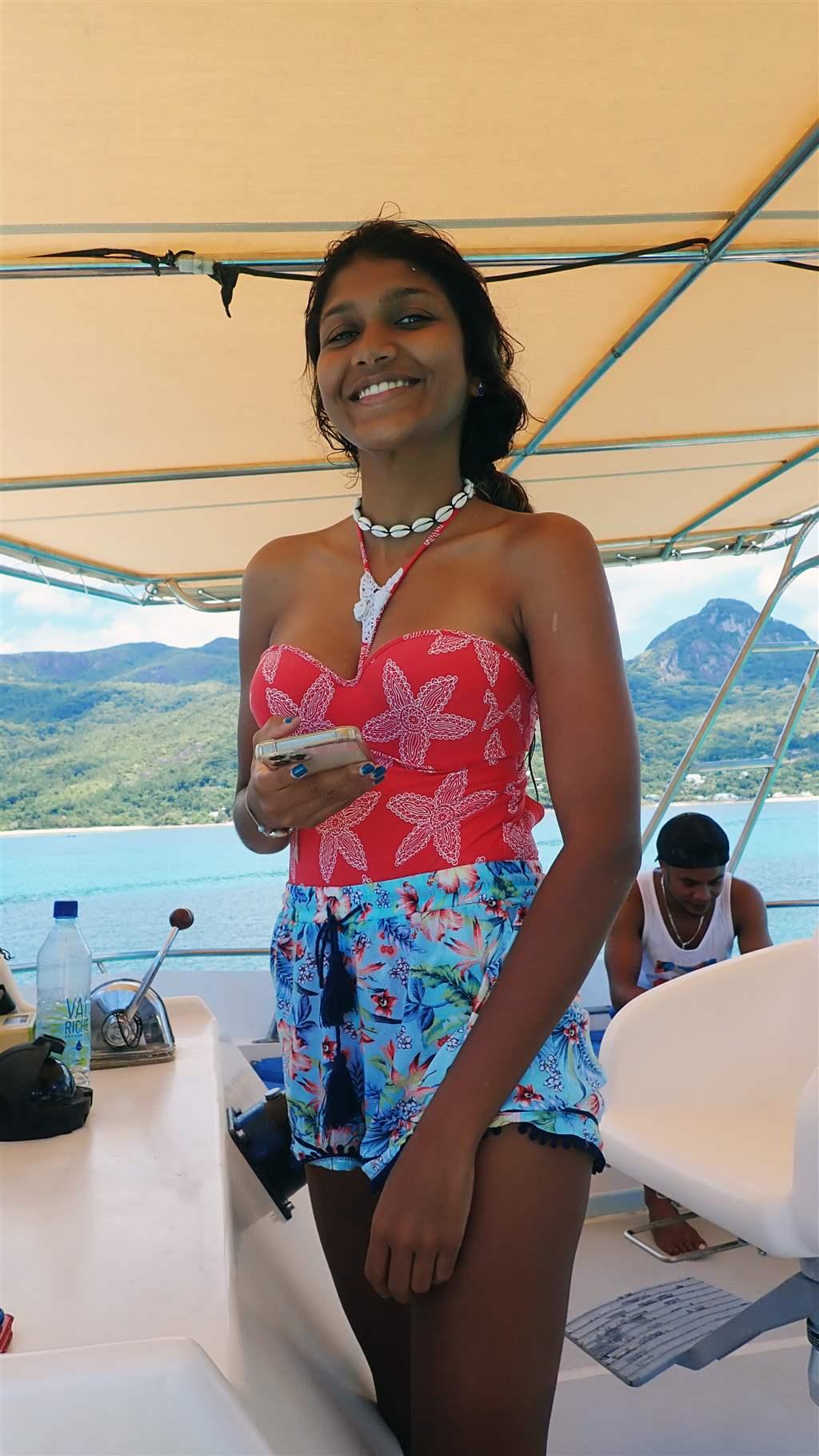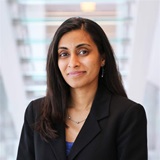Women Take the Lead on Seychelles' Seagrass Research
Scientists’ mapping and carbon assessment project supports the country’s climate ambitions
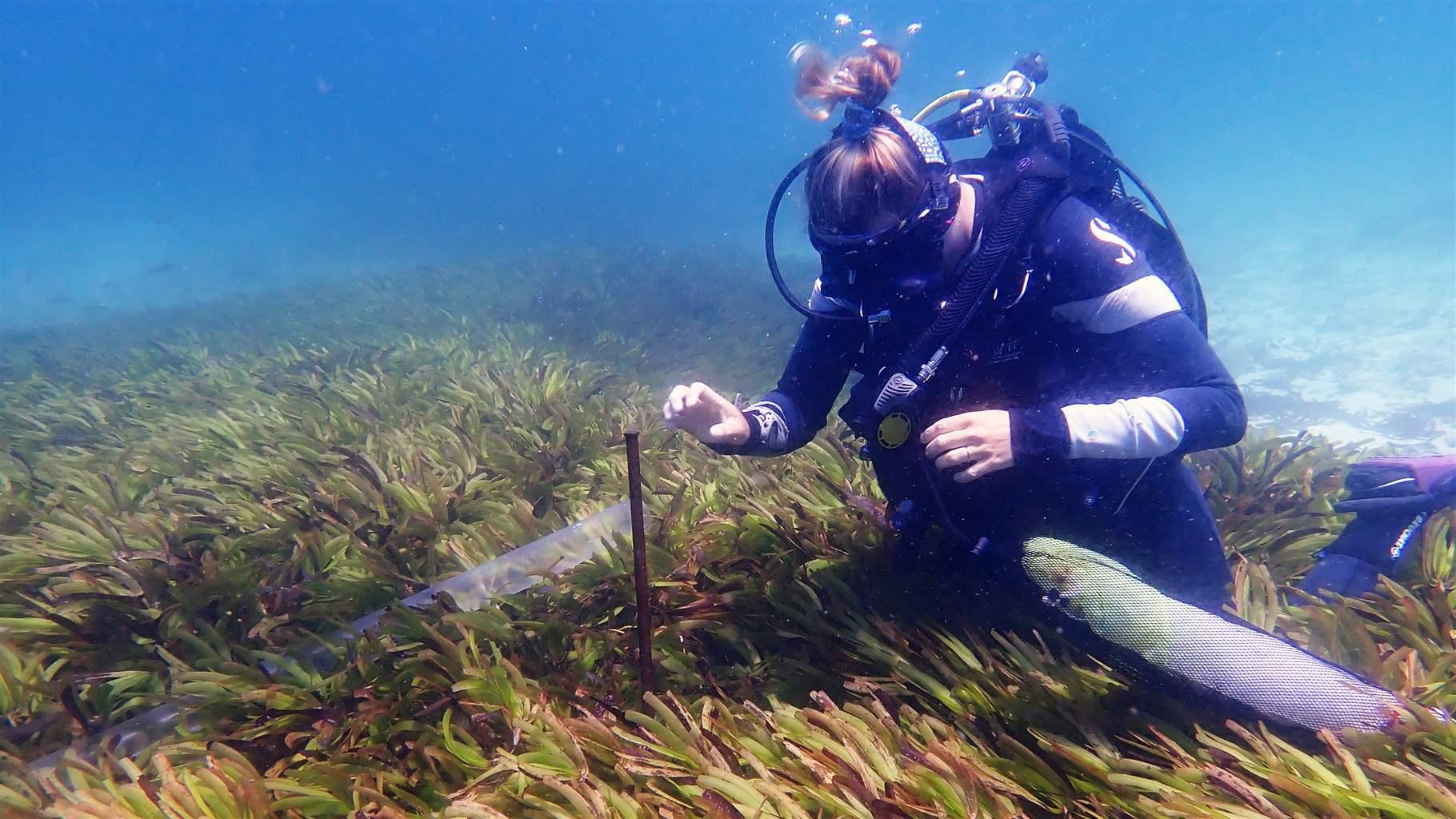
Like coastal wetlands around the world, the seagrass meadows that fringe Seychelles provide important habitat for a multitude of marine species and support fisheries, tourism, and recreational activities.
Although seagrass meadows are found in all coastal waters except in the Antarctic, they remain understudied. In fact, experts estimate that only 20% of the world’s seagrass meadows have been fully mapped.
In Seychelles, a group of scientists are doing its part to change that, and The Pew Charitable Trusts celebrates these women. The scientists are members of the Seagrass Mapping and Carbon Assessment Project team that is developing the first field-validated seagrass map for Seychelles and estimating how much carbon is stored in the country’s seagrass meadows. This information directly supports the Government of Seychelles’ recent commitment to protect all seagrass meadows by 2030 as part of its nationally determined contribution to the Paris Agreement.
Below, some of the women involved in the Seychelles seagrass research project share their thoughts on the need to study and protect this versatile, vulnerable habitat.
“We know so little about the extent of seagrass across the world. Existing efforts to map seagrass as a global habitat vary drastically due to the different scientific approaches employed, and deep seagrass ecosystems are often overlooked. Through cutting-edge technology and innovative fieldwork methods, we can more accurately map seagrass and apply this knowledge to all aspects of related research, such as ecosystem service quantification, understanding the carbon storage potential, habitat restoration, and species protection.”
—Lucy Martin, research assistant, Seychelles Seagrass Mapping and Carbon Assessment Project
“Seagrass meadows provide countless benefits to the people of Seychelles, both directly and indirectly. As part of the team surveying previously unexplored seagrass in the inner islands, I saw seagrasses being used as essential nursery sites for many juvenile fish species. I was also fortunate to encounter cryptic animals, like the ghost pipefish and trumpetfish camouflaging perfectly. I witnessed animals sheltering through rough conditions and how the seagrass reduces wave energy by slowing down water currents. Its extensive roots stabilize the seafloor and prevent coastal erosion, keeping sediments from moving, and traps suspended sediment to maintain the integrity of the local shoreline, especially during storms. Because of the voluminous ecosystem benefits provided by seagrass, it is important that this biodiverse island nation of Seychelles ensures their natural wealth is protected.”
—Nasreen Khan, conservation officer, Island Conservation Society Silhouette
“Seagrasses play a critical role in the health of our oceans and even for the entire planet. They are considered as ecosystem engineers as they provide habitat, food, and shelter for numerous marine creatures such as turtles, dugongs, and many species of fish and invertebrates. Seagrasses also not only reduce wave energy and coastal erosion but also produce oxygen and store carbon.”
—Elena Levorato, conservation officer, Island Conservation Society Desroches
“The significance of seagrass as critical and commercially important habitats means that their conservation should be of great importance. That is why co-designed projects, where actors work together to collect data and information that inform policies targeting the conservation of seagrass, are relevant. Without these efforts, decision-makers would not have access to data and knowledge that guides the development of policies for seagrass conservation.”
—Sylvanna Antat, Ph.D., director of Blue Economy Research Institute, University of Seychelles
“Through the Seagrass Mapping and Carbon Assessment Project, the citizens of Seychelles are learning that seagrass meadows are nature-based solutions to climate change. Seagrasses serve as blue carbon sinks; they protect coastlines against erosion and enhance biodiversity by providing food and habitat for hundreds of species. This project will provide much-needed quantitative data about the location of these critical habitats as well as their capacity to store organic carbon.”
—Jeanne A. Mortimer, Ph.D., seagrass researcher, Seychelles Seagrass Mapping and Carbon Assessment Project
“Seagrass is an important component of the marine ecosystem, providing valuable habitats and nursery grounds for marine creatures as well as acting as a coastal defense and having the capacity to store carbon. Despite its importance, seagrass has been largely overlooked. I choose to participate in the seagrass project because I believe that more emphasis should be done to study seagrasses, their ecology, impacts, and how to protect them.”
—Annabelle Cupidon, science officer, Island Conservation Society
“My favorite part was putting in practice what I learned at the workshop, and also diving around Praslin in helping out mapping the seagrass meadows. Meeting new people and trying out the new methods and techniques is another favorite aspect of the research project.”
—Athina Antoine, assistant science and technical officer, Nature Seychelles
“Those of us who work alongside our oceans every day must know about seagrass so we can do our part to protect it. We need to combine conservation and science with the world of diving. I was impressed by the number of organizations that came together to bring the fieldwork to life. It was a dream project for those of us receiving active training in the field, and I look forward to being part of more scientific expeditions, to give back to our oceans and to be immersed in the science of what I love.”
—Emilie Chetty, dive center owner, Atoll Divers Seychelles
